#Environment of a urban architecture
Explore tagged Tumblr posts
Text
Trevor's Weekend virtually displays Windy City 1.4 Story Mode mod version for Grand Theft Auto V. Catch the video on YouTube as well: https://youtu.be/XLtT9K3nFBY Mod is posted on 5Mods and GTAInside as well but is currently awaiting admin approval, stay tuned there for updates: https://www.gta5-mods.com/maps/windy-city-windy-city-christmas-edition https://www.gtainside.com/en/sanandreas/cars/158137-windy-city-windy-city-christmas-edition-1-0/
#youtube#mod#pc#map#gta5#patreon#chicago#fivem#gameplay#rockstargames#chicagoingames#gamechicago#rpt#new rp#trevor philips#TP Industries#Trinity#GTA 5 Windy City#GTA 5 Chicago#Level stuff#Environment of a urban architecture#Rockstars Advanced Game Engine#Modding#Map#Videogame gameplay of a mod#Tumblr Videos#Multimedia
1 note
·
View note
Text
"With “green corridors” that mimic the natural forest, the Colombian city is driving down temperatures — and could become five degrees cooler over the next few decades.
In the face of a rapidly heating planet, the City of Eternal Spring — nicknamed so thanks to its year-round temperate climate — has found a way to keep its cool.
Previously, Medellín had undergone years of rapid urban expansion, which led to a severe urban heat island effect — raising temperatures in the city to significantly higher than in the surrounding suburban and rural areas. Roads and other concrete infrastructure absorb and maintain the sun’s heat for much longer than green infrastructure.
“Medellín grew at the expense of green spaces and vegetation,” says Pilar Vargas, a forest engineer working for City Hall. “We built and built and built. There wasn’t a lot of thought about the impact on the climate. It became obvious that had to change.”
Efforts began in 2016 under Medellín’s then mayor, Federico Gutiérrez (who, after completing one term in 2019, was re-elected at the end of 2023). The city launched a new approach to its urban development — one that focused on people and plants.
The $16.3 million initiative led to the creation of 30 Green Corridors along the city’s roads and waterways, improving or producing more than 70 hectares of green space, which includes 20 kilometers of shaded routes with cycle lanes and pedestrian paths.
These plant and tree-filled spaces — which connect all sorts of green areas such as the curb strips, squares, parks, vertical gardens, sidewalks, and even some of the seven hills that surround the city — produce fresh, cooling air in the face of urban heat. The corridors are also designed to mimic a natural forest with levels of low, medium and high plants, including native and tropical plants, bamboo grasses and palm trees.
Heat-trapping infrastructure like metro stations and bridges has also been greened as part of the project and government buildings have been adorned with green roofs and vertical gardens to beat the heat. The first of those was installed at Medellín’s City Hall, where nearly 100,000 plants and 12 species span the 1,810 square meter surface.
“It’s like urban acupuncture,” says Paula Zapata, advisor for Medellín at C40 Cities, a global network of about 100 of the world’s leading mayors. “The city is making these small interventions that together act to make a big impact.”
At the launch of the project, 120,000 individual plants and 12,500 trees were added to roads and parks across the city. By 2021, the figure had reached 2.5 million plants and 880,000 trees. Each has been carefully chosen to maximize their impact.
“The technical team thought a lot about the species used. They selected endemic ones that have a functional use,” explains Zapata.
The 72 species of plants and trees selected provide food for wildlife, help biodiversity to spread and fight air pollution. A study, for example, identified Mangifera indica as the best among six plant species found in Medellín at absorbing PM2.5 pollution — particulate matter that can cause asthma, bronchitis and heart disease — and surviving in polluted areas due to its “biochemical and biological mechanisms.”
And the urban planting continues to this day.
The groundwork is carried out by 150 citizen-gardeners like Pineda, who come from disadvantaged and minority backgrounds, with the support of 15 specialized forest engineers. Pineda is now the leader of a team of seven other gardeners who attend to corridors all across the city, shifting depending on the current priorities...
“I’m completely in favor of the corridors,” says [Victoria Perez, another citizen-gardener], who grew up in a poor suburb in the city of 2.5 million people. “It really improves the quality of life here.”
Wilmar Jesus, a 48-year-old Afro-Colombian farmer on his first day of the job, is pleased about the project’s possibilities for his own future. “I want to learn more and become better,” he says. “This gives me the opportunity to advance myself.”
The project’s wider impacts are like a breath of fresh air. Medellín’s temperatures fell by 2°C in the first three years of the program, and officials expect a further decrease of 4 to 5C over the next few decades, even taking into account climate change. In turn, City Hall says this will minimize the need for energy-intensive air conditioning...
In addition, the project has had a significant impact on air pollution. Between 2016 and 2019, the level of PM2.5 fell significantly, and in turn the city’s morbidity rate from acute respiratory infections decreased from 159.8 to 95.3 per 1,000 people [Note: That means the city's rate of people getting sick with lung/throat/respiratory infections.]
There’s also been a 34.6 percent rise in cycling in the city, likely due to the new bike paths built for the project, and biodiversity studies show that wildlife is coming back — one sample of five Green Corridors identified 30 different species of butterfly.
Other cities are already taking note. Bogotá and Barranquilla have adopted similar plans, among other Colombian cities, and last year São Paulo, Brazil, the largest city in South America, began expanding its corridors after launching them in 2022.
“For sure, Green Corridors could work in many other places,” says Zapata."
-via Reasons to Be Cheerful, March 4, 2024
#colombia#brazil#urban#urban landscape#urban planning#cities#civil engineering#green architecture#green spaces#urban heat#urban heat island effect#weather#meteorology#global warming#climate change#climate hope#climate optimism#climate emergency#climate action#environment#environmental news#city architecture#bicycling#native plants#biodiversity#good news#hope#solarpunk#ecopunk#hopepunk
18K notes
·
View notes
Text
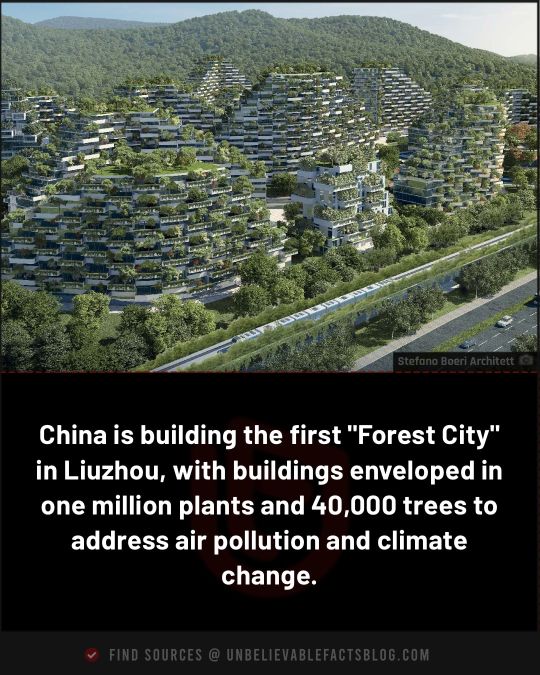
#China#Forest City#Liuzhou#urban planning#green architecture#air pollution#climate change#sustainability#environment#innovation
365 notes
·
View notes
Text

"IT STIRS" - ink/acrylics/digital - May 2024
Another blithe, dystopian impression!
#abstract#art#painting#fine art#abstract art#artwork#atmospheric#cinematic#dystopian#futuristic city#cityscape#city#urban landscape#urban environment#architecture#narrative art#contemporary art#visual art#modern art#irish art#kunst#moderne kunst#arte#acrylic painting#ink#mixed media art#mixed media#cyberpunk#carsten p dietrich#zehpeh
70 notes
·
View notes
Photo






Piotr Krynski
Art Director/Concept Artist
artstation
More from «Artstation» here
#Urban#building#Environments#art#Architecture#half-life#drawing#Piotr Krynski#concept art#artist#alyx#environment#New3dge#class#noai#krynski#scans#postapo#artstation#Concept Art
10 notes
·
View notes
Text

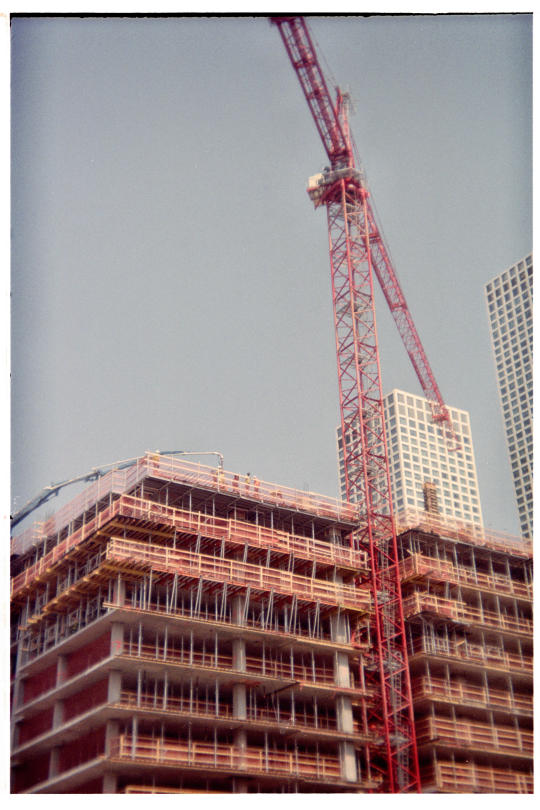
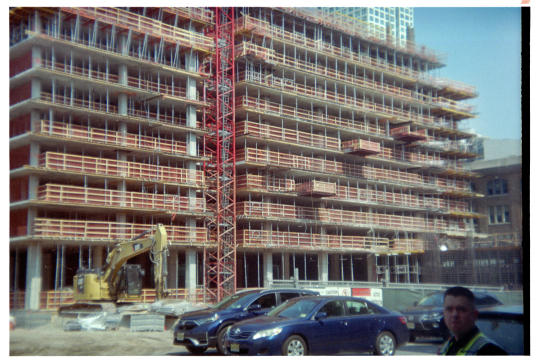

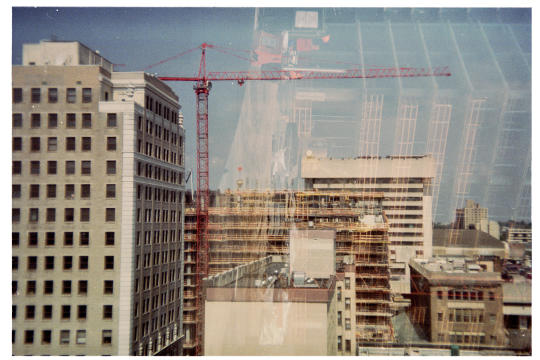
construction, jsq, jc - holga 135 & expired kodak color 400 speed film - developed at eliz digital & scanned with minolta dimage dual iii
#film#film photography#35mm#35mm photography#35mm color photography#city#city life#city photography#urban landscape#urban environment#construction#buildings#architecture#modern architecture#engineering#urban planning#transportation#trains#public transport#public transit
71 notes
·
View notes
Photo

Philosophical Concrete Inscription A textured concrete wall features a raised inscription asking: 'how does your body alter the space?' set in an urban environment. The mood is contemplative, inviting reflection on our interactions with physical spaces. silasAslan.com
#Concrete Art#Urban Environment#Minimalism#Philosophy#Reflection#Street Art#Textured Wall#Contemplative#Architecture#Visual Poetry#Abstract Art#Contemporary Art#Bern#Switzerland#Thought Provoking#Inspiration#City Exploration#Visual Art#Creative Thinking
4 notes
·
View notes
Text




Вырві глаз ці гэта добраўпарадкаванне? Гумавыя джунглі ў Беларусі
#беларусь#belarus#краснаполле#краснополье#krasnapollye#Krasnopolsky#urban environment#Small architectural forms
4 notes
·
View notes
Text

La Chicago River, ou rivière Chicago, étire du Michigan Lake au centre-ville de Chicago
#photography#Nature#Growth#Tranquility#Beauty In Nature#Scenics - Nature#Tranquil Scene#Non-Urban Scene#Landscape - Scenery#Rural Scene#Environment#architecture
4 notes
·
View notes
Text


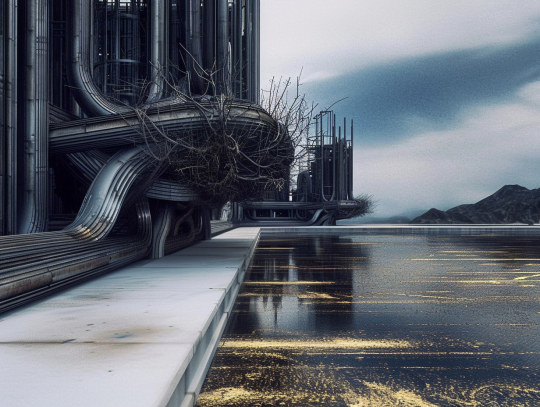

#industrial#dystopian#architecture#pipes#futuristic#metallic#monochrome#desolate#urban#reflective#science fiction setting#complex infrastructure#cold environment#mechanical complexity#ominous atmosphere#urban decay#textured surfaces#engineering#high detail#abandoned facility#technological#eerie#structured#large-scale#cityscape#3d#3d render#machinery#apocalyptic
3 notes
·
View notes
Photo

Means of egress
28 notes
·
View notes
Text
The Artist Who Imagined Zaire as a Miniature Utopia - Atlas Obscura






In the exhibition, a virtual reality tour leads visitors through the alleys between buildings, Suzuki explained, “as though you were a citizen on the street.” It’s not a guide to on-the-ground architecture, then or now. Instead, it’s one artist’s vision—colorful, glitzy, staggeringly exacting—for where to move the goal posts.
“Without a model, you are nowhere,” Kingelez once said. To be vital and sustainable, he suggested, an artist—or a populace—had to strive for something future-looking and envelope-pushing, however implausible. “A nation that can’t make models is a nation that doesn’t understand things,” he said. “A nation that doesn’t live.”
8 notes
·
View notes
Text

"PERIMETER" - acrylics/ink/digital - May 2024
#abstract#art#abstract art#fine art#painting#artwork#contemporary art#visual art#modern art#irish art#kunst#moderne kunst#arte#atmospheric#futuristic#strange#abstract landscape#urban landscape#urban#environment#acrylics painting#ink#mixed media#mixed media art#abstract artist#architecture#visuals#sci fi#science fiction#cyberpunk
33 notes
·
View notes
Text
Revitalización de calles
Diseño Urbano
Dada la lamentable situación de la calle debido a problemas recurrentes de las ciudades que no se enfocan en los peatones y le dan prioridad a los automotores, que incluye aceras demasiado angostas para permitir la circulación segura de los peatones, y considerando factores como la invasión de ventas informales en las aceras, vehículos que ocupan el área peatonal y se estacionan en lugares no permitidos o en doble fila, se ha propuesto la creación de un espacio seguro para peatones. La propuesta incluye reducir la jerarquía de los vehículos al asignar un solo carril para su circulación, otorgando prioridad a los peatones. Además, se contemplan áreas específicas para estacionamiento, zonas de vegetación creando microclimas, señalización horizontal y vertical eficiente, zonas de descanso con bancas y mesas, y la implementación de un carril exclusivo para bicicletas como medio de transporte alternativo.
Pensando en el impacto ambiental que la construcción produce en el ambiente, se propusó la utilización de materiales sostenibles como los aoquines de hormigón ecológicos y lámparas solares LED.

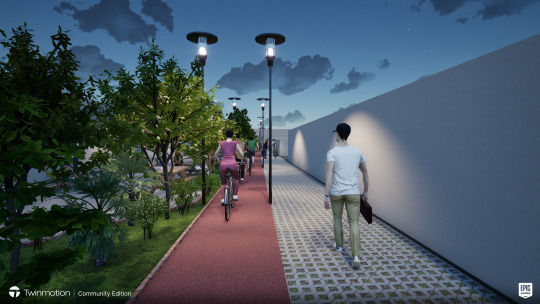
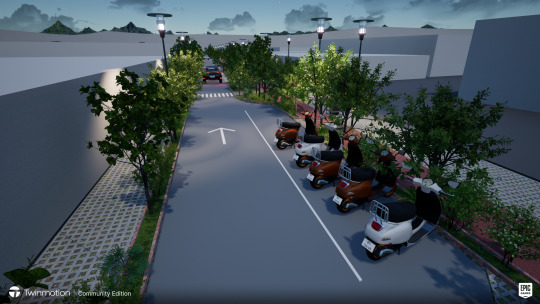

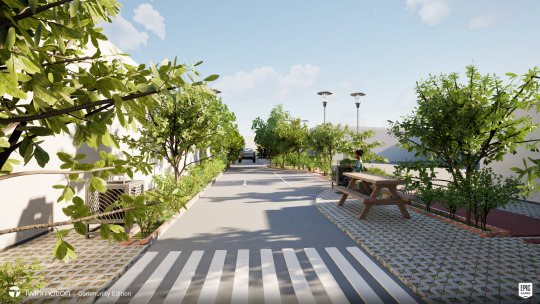
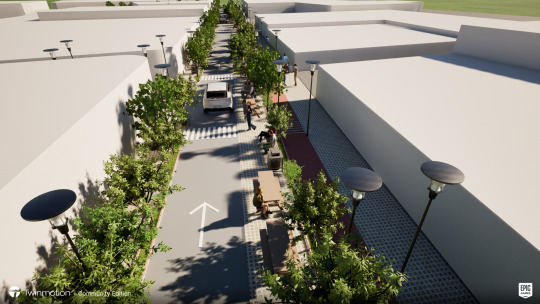
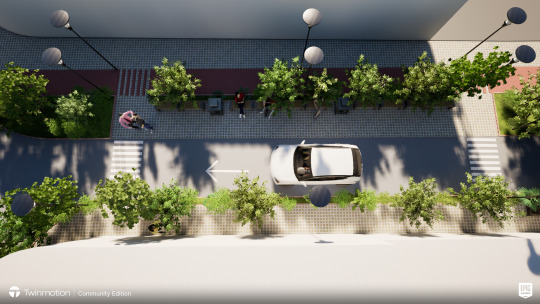
1 note
·
View note
Text



dick seay park, jersey city, nj - yashica mg-1 & 100 speed E-6 film - developed at bleecker digital & scanned with minolta dimage dual iii
#35mm#baseball#americana#film#film photography#35mm photography#ishootfilm#photography#lensblr#city#city life#city photography#urban landscape#urban environment#35mm color photography#grunge#buildings#bridges#architecture
26 notes
·
View notes
